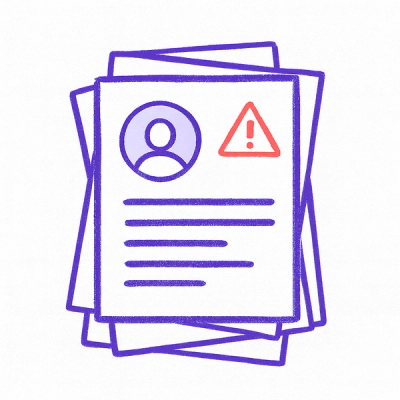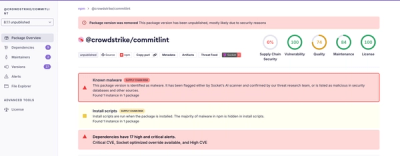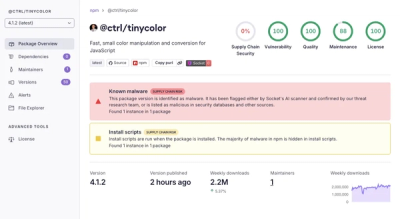

Fluent Flet

A fluent design widgets library based on Flet
Documentation

istallation
[!IMPORTANT]
fluentflet is still in alpha version. this means that there could be bugs and unexpected behaviours
pip install fluentflet
git clone https://github.com/Bbalduzz/fluentflet.git
cd fluentflet
py setup.py install
documentation overview
Table of Contents
Components
Enhancements
Button Component
fluentflet/components/button.py
ButtonVariant (Enum)
class ButtonVariant(Enum):
DEFAULT = "default"
ACCENT = "accent"
HYPERLINK = "hyperlink"
TOGGLE = "toggle"
Button
Purpose: Implements Fluent Design System button control with multiple variants and styles.
Inherits from: ft.TextButton
Attributes:
is_toggled: bool = False. Current toggle state for toggle variant buttons_variant: ButtonVariant. Current button style variantdesign_system: FluentDesignSystem. Reference to design system for stylingtheme: Theme. Current theme settings
Constructor Parameters:
content: Union[str, ft.Control] = None. Button content (text or control like icon)
- If string: Creates Text control automatically
- If control: Uses directly
variant: ButtonVariant = ButtonVariant.DEFAULT. Button style variantheight: int = 35. Button height in pixelscustom_color: Optional[str] = None. Optional color overridedesign_system: FluentDesignSystem = None. Design system instanceis_dark_mode: bool = True. Theme mode selection**kwargs. Additional Flet button properties
Example Usage:
from fluentflet.components import Button, ButtonVariant
from fluentflet.utils import FluentIcon, FluentIcons
basic_button = Button(
"Click Me",
variant=ButtonVariant.DEFAULT,
on_click=lambda e: print("Clicked!")
)
icon_button = Button(
content=FluentIcon(FluentIcons.ADD),
variant=ButtonVariant.ACCENT
)
toggle = Button(
"Toggle Me",
variant=ButtonVariant.TOGGLE,
on_click=lambda e: print(f"Toggled: {toggle.is_toggled}")
)
Checkbox Component
Path: fluentflet/components/checkbox.py
CheckState (Enum)
class CheckState(Enum):
UNCHECKED = "unchecked"
CHECKED = "checked"
INDETERMINATE = "indeterminate"
Checkbox
Purpose: Implements tri-state checkbox control with Fluent Design styling.
Inherits from: ft.Container
Attributes:
state: CheckState. Current checkbox state_disabled: bool. Disabled state trackingsize: int. Size of the checkbox in pixelsthree_state: bool. Whether indeterminate state is allowed
Constructor Parameters:
state: CheckState = CheckState.UNCHECKED. Initial statelabel: str = "". Optional label textsize: int = 20. Size in pixelson_change: Callable[[CheckState], None] = None. State change callbackdisabled: bool = False. Initial disabled statethree_state: bool = False. Enable tri-state behaviordesign_system: FluentDesignSystem = None. Design system instanceis_dark_mode: bool = True. Theme mode**kwargs. Additional container properties
Example Usage:
from fluentflet.components import Checkbox, CheckState
checkbox = Checkbox(
label="Enable feature",
on_change=lambda state: print(f"State: {state}")
)
tristate = Checkbox(
label="Select files",
three_state=True,
state=CheckState.INDETERMINATE
)
disabled = Checkbox(
label="Unavailable option",
disabled=True,
state=CheckState.CHECKED
)
Dialog Component
fluentflet/components/dialog.py
Dialog
Purpose: Implements a modal dialog overlay with Fluent Design styling.
Inherits from: ft.Container
Attributes:
dialog_width: int = 400. Width of dialog in pixelstitle_text: str. Dialog title_content: ft.Control. Main dialog contentactions: List[Button]. Action buttons for dialog
Constructor Parameters:
title: str = "Dialog Title". Dialog header textcontent: Optional[ft.Control] = None. Main content area
- Defaults to simple text if not provided
- Can be any Flet control
actions: Optional[List[Button]] = None. Bottom action buttons
- Defaults to ["Action", "Close"] buttons if not provided
- Close button automatically included
Methods:
-
show(): Display the dialog
Returns:
- None: Updates page overlay
-
close_dialog(e: Optional[ft.ControlEvent] = None): Hide and remove dialog
Returns:
- None: Removes from page overlay
Example Usage:
from fluentflet.components import Dialog, Button, ButtonVariant
dialog = Dialog(
title="Confirm Action",
content=ft.Text("Are you sure you want to proceed?")
)
custom_dialog = Dialog(
title="Save Changes",
content=ft.Column([
ft.Text("Save current changes?"),
ft.TextField(label="Comment")
]),
actions=[
Button("Save", variant=ButtonVariant.ACCENT),
Button("Don't Save"),
Button("Cancel")
]
)
page.overlay.append(dialog)
dialog.show()
Dropdown Component
fluentflet/components/dropdown.py
Dropdown
Purpose: Implements a dropdown select control with Fluent Design styling.
Inherits from: ft.Container
Attributes:
options: List[Union[str, ft.Control]]. Available optionsmax_width: int. Maximum width of dropdownselected_value: str. Currently selected optionis_open: bool. Dropdown expanded state
Constructor Parameters:
options: List[Union[str, ft.Control]]. List of dropdown options
- Can be strings or Flet controls
- Must not be empty
max_width: int = 150. Maximum width in pixelstheme_mode: ft.ThemeMode = ft.ThemeMode.DARK. Theme selectionon_select: Optional[Callable] = None. Selection change callbackanimated: bool = True. Enable animationsinitial_value: Optional[str] = None. Initially selected item**kwargs. Additional container properties
Example Usage:
from fluentflet.components import Dropdown
dropdown = Dropdown(
options=["Option 1", "Option 2", "Option 3"],
on_select=lambda value: print(f"Selected: {value}")
)
dropdown_with_icons = Dropdown(
options=[
ft.Row([
ft.Icon(ft.icons.SETTINGS),
ft.Text("Settings")
]),
ft.Row([
ft.Icon(ft.icons.PERSON),
ft.Text("Profile")
])
],
max_width=200
)
Expander Component
fluentflet/components/expander.py
Expander
Purpose: Implements collapsible/expandable section with Fluent Design styling.
Inherits from: ft.Container
Attributes:
_expanded: bool. Current expansion state_width: int. Width of expander_header: ft.Control. Header content_content: ft.Control. Main content_content_height: Optional[int]. Cached content height for animation
Constructor Parameters:
header: Union[str, ft.Control]. Content shown in always-visible header
- If string: Creates text control
- If control: Uses directly
content: ft.Control. Content shown when expandedexpand: bool = False. Initial expanded statewidth: int = 600. Expander width in pixelsis_dark_mode: bool = True. Theme mode**kwargs. Additional container properties
Properties:
expanded: bool. Get/set expanded state
Example Usage:
from fluentflet.components import Expander
expander = Expander(
header="Click to Expand",
content=ft.Text("Expanded content here"),
expand=False
)
expander = Expander(
header=ft.Row([
ft.Icon(ft.icons.SETTINGS),
ft.Text("Advanced Settings")
]),
content=ft.Column([
ft.TextField(label="Setting 1"),
ft.TextField(label="Setting 2")
])
)
ListItem Component
fluentflet/components/listitem.py
ListItem
Purpose: Implements selectable list item with Fluent Design styling.
Inherits from: ft.GestureDetector
Class Attributes:
instances: List[ListItem]. All created instances for selection management
Instance Attributes:
item_content: ft.Control. Item's contentis_hovered: bool. Hover stateis_pressed: bool. Press state_is_selected: bool. Selection state
Constructor Parameters:
content: ft.Control. Item contenton_click: Optional[Callable] = None. Click handleris_dark_mode: bool = True. Theme modeselected: bool = False. Initial selection state**kwargs. Additional gesture detector properties
Properties:
selected: bool. Get/set selection state
Example Usage:
from fluentflet.components import ListItem
item = ListItem(
content=ft.Text("List Item 1"),
on_click=lambda _: print("Clicked")
)
item = ListItem(
content=ft.Row([
ft.Icon(ft.icons.PERSON),
ft.Column([
ft.Text("John Doe"),
ft.Text("john@example.com", size=12)
])
]),
selected=True
)
items_list = ft.ListView(
controls=[
ListItem(content=ft.Text(f"Item {i}"))
for i in range(5)
]
)
ProgressRing Component
fluentflet/components/progressring.py
ProgressRing
Purpose: Implements circular progress indicator with Fluent Design styling.
Inherits from: ft.ProgressRing
Constructor Parameters:
stroke_width: int = 3. Width of the ring strokevalue: Optional[float] = None. Progress value (0.0-1.0 for determinate, None for indeterminate)**kwargs. Additional progress ring properties
Example Usage:
from fluentflet.components import ProgressRing
loading = ProgressRing()
progress = ProgressRing(value=0.75)
custom = ProgressRing(
value=0.5,
stroke_width=5,
width=100,
height=100
)
Radio Component
fluentflet/components/radio.py
Radio
Purpose: Implements individual radio button control.
Inherits from: ft.Container
Attributes:
value: Any. Value associated with radio button_selected: bool. Current selection state_disabled: bool. Disabled stateis_hovered: bool. Hover stateis_pressed: bool. Press state_radio_group: Optional[RadioGroup]. Parent radio group
Constructor Parameters:
value: Any = None. Value for this radio optionlabel: str = "". Label textselected: bool = False. Initial selectiondisabled: bool = False. Disabled statedesign_system: FluentDesignSystem = None. Design system instanceis_dark_mode: bool = True. Theme mode**kwargs. Additional container properties
RadioGroup
Purpose: Container for managing a group of related radio buttons.
Inherits from: ft.Container
Attributes:
radios: List[Radio]. Child radio buttons_value: Any. Currently selected value_on_change: Optional[Callable]. Value change callback
Constructor Parameters:
content: ft.Control = None. Container contentvalue: Any = None. Initial selected valueon_change: Optional[Callable] = None. Value change handlerdesign_system: FluentDesignSystem = None. Design system instanceis_dark_mode: bool = True. Theme mode**kwargs. Additional container properties
Example Usage:
from fluentflet.components import Radio, RadioGroup
radio = Radio(
value="option1",
label="Option 1",
disabled=False
)
radio_group = RadioGroup(
content=ft.Column([
Radio(value="small", label="Small"),
Radio(value="medium", label="Medium"),
Radio(value="large", label="Large")
]),
value="medium",
on_change=lambda value: print(f"Selected: {value}")
)
Slider Component
fluentflet/components/slider.py
SliderOrientation (Enum)
class SliderOrientation(Enum):
HORIZONTAL = "horizontal"
VERTICAL = "vertical"
Slider
Purpose: Implements a draggable slider control with Fluent Design styling.
Inherits from: ft.Container
Attributes:
current_value: float. Current slider valuemin: float. Minimum valuemax: float. Maximum valuedragging: bool. Current drag statethumb_size: int. Size of slider thumbis_hovered: bool. Hover stateis_pressed: bool. Press state
Constructor Parameters:
value: float = 0. Initial value
- Must be between min and max
min: float = 0. Minimum valuemax: float = 100. Maximum valueon_change: Optional[Callable[[float], None]] = None. Value change callbacksize: int = 200. Slider length in pixelsdisabled: bool = False. Disabled stateorientation: SliderOrientation = SliderOrientation.HORIZONTAL. Slider orientationis_dark_mode: bool = True. Theme mode**kwargs. Additional container properties
Example Usage:
from fluentflet.components import Slider, SliderOrientation
slider = Slider(
value=50,
min=0,
max=100,
on_change=lambda e: print(f"Value: {e.current_value}")
)
vertical_slider = Slider(
value=0.5,
min=0,
max=1,
orientation=SliderOrientation.VERTICAL,
size=150
)
custom = Slider(
value=-50,
min=-100,
max=100,
disabled=False
)
TextBox Component
fluentflet/components/textbox.py
TextBox
Purpose: Implements text input control with Fluent Design styling.
Inherits from: ft.Container
Attributes:
textfield: ft.TextField. Core text input controlbottom_border: ft.Container. Bottom border with animationactions_row: ft.Row. Container for action buttonsdefault_bgcolor: str. Default background color
Constructor Parameters:
design_system: FluentDesignSystem = FluentDesignSystem(). Design system instanceplaceholder: str = "TextBox". Placeholder textprefix: str = None: Optional text to display before the input areasuffix: str = None: Optional text to display after the input areawidth: int = 200. Control widthtext_size: int = 14. Font sizeheight: int = 32. Control heightpassword: bool = False. Password input modeactions_visible: bool = True. Show/hide action buttons**kwargs. Additional container properties
Methods:
add_action(icon: FluentIcons, on_click=None, tooltip: str = None) -> Button
- Adds action button to textbox
- Returns the created button
Example Usage:
from fluentflet.components import TextBox
from fluentflet.utils import FluentIcons
textbox = TextBox(
placeholder="Enter text",
width=300
)
password = TextBox(
placeholder="Password",
password=True
)
url_input = TextBox(
placeholder="Enter domain name",
prefix="https://",
suffix=".com",
width=300
)
textbox_with_actions = TextBox(
placeholder="Search",
width=400
)
textbox_with_actions.add_action(
icon=FluentIcons.SEARCH,
on_click=lambda _: print("Search clicked"),
tooltip="Search"
)
textbox_with_actions.add_action(
icon=FluentIcons.DISMISS,
on_click=lambda _: setattr(textbox_with_actions, 'value', ''),
tooltip="Clear"
)
Toggle Component
fluentflet/components/toggle.py
Toggle
Purpose: Implements a toggle switch with Fluent Design styling.
Inherits from: ft.Container
Attributes:
value: bool. Current toggle stateon_content: str. Label text for ON stateoff_content: str. Label text for OFF state_label: str. Current label text_handle_size: int. Size of toggle handle_handle_expanded_width: int. Width when handle is pressed
Constructor Parameters:
value: bool = False. Initial statelabel: Union[str, dict] = None. Label text or dict with on/off states
- If string: Same label for both states
- If dict: Must have "on_content" and "off_content" keys
label_position: ft.LabelPosition = ft.LabelPosition.RIGHT. Label placementon_change: Optional[Callable[[bool], None]] = None. State change callbacklabel_style: Optional[Dict] = None. Label text stylingdisabled: bool = False. Disabled statewidth: int = 40. Toggle widthheight: int = 20. Toggle height**kwargs. Additional container properties
Example Usage:
from fluentflet.components import Toggle
toggle = Toggle(
value=False,
label="Enable feature",
on_change=lambda state: print(f"Toggled: {state}")
)
toggle = Toggle(
value=True,
label={
"on_content": "Enabled",
"off_content": "Disabled"
}
)
toggle = Toggle(
label="Custom toggle",
label_style={
"size": 16,
"weight": "bold"
},
width=50,
height=25
)
Tooltip Component
fluentflet/components/tooltip.py
ToolTip
Purpose: Implements hover tooltip with Fluent Design styling.
Inherits from: ft.Tooltip
Constructor Parameters:
padding: int = 6. Tooltip paddingborder_radius: int = 4. Corner radiustext_style: ft.TextStyle. Tooltip text stylingbgcolor: str = "#2d2d2d". Background colorborder: ft.Border. Border styleprefer_below: bool = False. Show below target when possiblewait_duration: int = 300. Delay before showing (ms)**kwargs. Additional tooltip properties
Example Usage:
from fluentflet.components import ToolTip, Button
button = Button("Hover me")
tooltip = ToolTip(
message="This is a tooltip",
content=button
)
tooltip = ToolTip(
message="Custom tooltip",
content=ft.Text("Hover for info"),
text_style=ft.TextStyle(
size=14,
weight=ft.FontWeight.BOLD
),
bgcolor="#333333",
border_radius=8
)
TreeView Components
fluentflet/components/treeview.py
TreeItemData
Purpose: Base data structure for tree items.
Attributes:
id: str. Unique identifier for the itemlabel: str. Display textvalue: Optional[Any] = None. Associated valueparent_id: Optional[str] = None. ID of parent itemchildren: List[TreeItemData] = None. Child itemsmetadata: Dict[str, Any] = None. Additional item data
Example Usage:
item = TreeItemData(
id="root",
label="Root Item",
children=[
TreeItemData(id="child1", label="Child 1"),
TreeItemData(id="child2", label="Child 2")
]
)
TreeViewAbstractModel
Purpose: Abstract base class for tree data models.
Generic Type: T - Type of raw data
Attributes:
items: List[TreeItemData]. Processed tree items_raw_data: Optional[T]. Source data
Abstract Methods:
process_data(): Convert raw data to TreeItemData objects
Common Methods:
get_item_by_id(item_id: str) -> Optional[TreeItemData]get_root_items() -> List[TreeItemData]get_children(parent_id: str) -> List[TreeItemData]
DictTreeViewModel
Purpose: Tree model for dictionary data.
Inherits from: TreeViewAbstractModel[Dict]
Example Usage:
data = {
"Root": {
"Child1": {
"GrandChild1": 1.1,
"GrandChild2": 1.2
},
"Child2": 2.0
}
}
model = DictTreeViewModel()
model.raw_data = data
JSONTreeViewModel
Purpose: Tree model for JSON array/object data.
Inherits from: TreeViewAbstractModel[List[Dict]]
Constructor Parameters:
field_mapping: Optional[Dict[str, str]] = None. Custom field name mapping
- Default maps: id, label, value, children
Example Usage:
data = [
{
"id": "1",
"label": "Item 1",
"children": [
{
"id": "1.1",
"label": "Subitem 1.1"
}
]
}
]
model = JSONTreeViewModel()
model.raw_data = data
TreeView
Purpose: Main tree view component with drag-drop support.
Inherits from: ft.Column
Constructor Parameters:
data: dict. Source datamodel: Optional[TreeViewAbstractModel] = DictTreeViewModel(). Data modelon_right_click: Optional[Callable] = None. Right-click handleris_dark_mode: bool = True. Theme mode
Methods:
handle_item_drop(src_id: str, target_id: str): Handle item reordering
Example Usage:
from fluentflet.components import TreeView, DictTreeViewModel
data = {
"Root": {
"Item1": 1.0,
"Item2": {
"SubItem1": 2.1,
"SubItem2": 2.2
}
}
}
tree = TreeView(
data=data,
model=DictTreeViewModel(),
on_right_click=lambda item: print(f"Right clicked: {item.label}")
)
class MyModel(TreeViewAbstractModel[List[Dict]]):
def process_data(self):
for item in self.raw_data:
self.items.append(TreeItemData(
id=str(item["id"]),
label=item["name"],
value=item["data"]
))
tree = TreeView(
data=my_data,
model=MyModel()
)
Toast Component
fluentflet/components/toast.py
Enums
ToastPosition
class ToastPosition(Enum):
TOP_LEFT = "top-left"
TOP_RIGHT = "top-right"
TOP_CENTER = "top-center"
BOTTOM_LEFT = "bottom-left"
BOTTOM_RIGHT = "bottom-right"
BOTTOM_CENTER = "bottom-center"
ToastVariant
class ToastVariant(Enum):
SINGLE_LINE = "single-line"
MULTI_LINE = "multi-line"
ToastSeverity
class ToastSeverity(Enum):
INFORMATIONAL = "informational"
SUCCESS = "success"
WARNING = "warning"
CRITICAL = "critical"
ToastActionType
class ToastActionType(Enum):
NONE = "none"
HYPERLINK = "hyperlink"
DEFAULT = "default"
Toast
Purpose: Individual toast notification with Fluent Design styling.
Inherits from: ft.Container
Constructor Parameters:
title: Optional[str] = None. Toast title textmessage: Optional[str] = None. Toast message textseverity: ToastSeverity | str = ToastSeverity.INFORMATIONAL. Toast stylevariant: ToastVariant | str = ToastVariant.SINGLE_LINE. Layout styleaction_type: ToastActionType | str = ToastActionType.NONE. Action button typeaction_text: Optional[str] = None. Action button textaction_url: Optional[str] = None. URL for hyperlink actionon_action: Optional[Callable] = None. Action click handlerposition: ToastPosition | str = ToastPosition.TOP_RIGHT. Toast position**kwargs. Additional container properties
Toaster
Purpose: Toast notification manager for showing/hiding toasts.
Constructor Parameters:
page: ft.Page. Flet page instanceexpand: bool = False. Auto-expand toasts on hoverposition: ToastPosition | str = ToastPosition.TOP_RIGHT. Default positiontheme: str = "dark". Theme modedefault_toast_duration: int = 3. Default show duration in secondsdefault_offset: int = 20. Spacing from window edge
Methods:
show_toast
def show_toast(
self,
title: Optional[str] = None,
message: Optional[str] = None,
severity: ToastSeverity | str = ToastSeverity.INFORMATIONAL,
variant: ToastVariant | str = ToastVariant.SINGLE_LINE,
action_type: ToastActionType | str = ToastActionType.NONE,
action_text: Optional[str] = None,
action_url: Optional[str] = None,
on_action: Optional[Callable] = None,
position: Optional[ToastPosition | str] = None,
duration: int = 3,
toast: Optional[Toast] = None,
**kwargs
) -> None
Example Usage:
from fluentflet.components import Toast, Toaster, ToastSeverity
def main(page: ft.Page):
toaster = Toaster(
page=page,
position="top-right",
default_toast_duration=5
)
toaster.show_toast(
title="Success!",
message="Operation completed",
severity=ToastSeverity.SUCCESS
)
toaster.show_toast(
title="Warning",
message="Connection lost",
severity=ToastSeverity.WARNING,
action_type="default",
action_text="Retry",
on_action=lambda: print("Retrying...")
)
custom_toast = Toast(
title="Custom Toast",
message="With custom styling",
severity=ToastSeverity.INFORMATIONAL,
variant=ToastVariant.MULTI_LINE,
action_type=ToastActionType.HYPERLINK,
action_text="Learn More",
action_url="https://example.com"
)
toaster.show_toast(toast=custom_toast)
ft.app(target=main)
The Toast system provides:
- Multiple severity levels with appropriate styling
- Single and multi-line variants
- Custom action buttons/links
- Flexible positioning
- Automatic stacking and animation
- Hover expansion
- Duration control
Enhancements
Page Monkey Patches
fluentflet/utils/__init__.py
Purpose: Extends Flet's Page class with additional functionality for blur effects and drag-drop support.
Added Page Properties
page.blur_effect
@property
def blur_effect(self) -> bool:
"""Controls window blur effect on Windows"""
return self._blur
@blur_effect.setter
def blur_effect(self, value: bool):
page.accepts_drops
@property
def accepts_drops(self) -> bool:
"""Controls file drop acceptance"""
return self._accepts_drops
@accepts_drops.setter
def accepts_drops(self, value: bool):
Added Page Methods
enable_drag_and_drop
def enable_drag_and_drop(
files_callback: Optional[Callable[[List[str]], None]] = None,
drag_enter_callback: Optional[Callable[[Tuple[int, int]], None]] = None,
drag_over_callback: Optional[Callable[[Tuple[int, int]], None]] = None,
drag_leave_callback: Optional[Callable[[], None]] = None
):
"""Enable file drag-drop functionality
Parameters:
- files_callback: Called with list of dropped file paths
- drag_enter_callback: Called with (x,y) when drag enters window
- drag_over_callback: Called with (x,y) while dragging over window
- drag_leave_callback: Called when drag leaves window
"""
Example Usage:
def on_files_dropped(files):
print("Files dropped:", files)
def on_drag_enter(point):
print(f"Drag entered at {point}")
page.accepts_drops = True
page.enable_drag_and_drop(
files_callback=on_files_dropped,
drag_enter_callback=on_drag_enter
)
FluentWindow
fluentflet/window/fluent_window.py
Purpose: Implements a window manager with navigation, routing and state management following Fluent Design.
NavigationType (Enum)
enum for controlling navigation layout:
class NavigationType(Enum):
STANDARD = auto()
OVERLAY = auto()
Example Usage:
from fluentflet import FluentWindow, NavigationType
window = FluentWindow(
page=page,
nav_type=NavigationType.OVERLAY,
navigation_items=[
{"icon": FluentIcons.HOME, "label": "Home", "route": "/home"},
{"icon": FluentIcons.SETTINGS, "label": "Settings", "route": "/settings"}
]
)
Classes
FluentState
Purpose: State management for FluentWindow applications
class FluentState:
"""Manages persistent and ephemeral application state"""
def set(self, key: str, value: any, persist: bool = False):
"""Set state value
Parameters:
- key: State key
- value: State value
- persist: If True, saves to session storage
"""
def get(self, key: str, default=None) -> any:
"""Get state value"""
def subscribe(self, key: str, callback: callable):
"""Subscribe to state changes"""
Example Usage:
class AppState(FluentState):
def _load_initial_state(self):
self._state = {
"theme": "light",
"selected_user": None
}
def set_theme(self, theme: str):
self.set("theme", theme, persist=True)
window.state = AppState()
window.state.subscribe("theme", lambda t: print(f"Theme changed: {t}"))
FluentWindow
Purpose: Main window manager implementing navigation and routing
Constructor Parameters:
page: ft.Page. Flet page instancenavigation_items: Optional[List[Dict]]. Navigation menu items
[
{
"icon": FluentIcons.HOME,
"label": "Home",
"route": "/",
}
]
nav_type: NavigationType = NavigationType.STANDARD. Side navigation rail typebottom_navigation_items: Optional[List[Dict]]. Bottom nav itemsselected_index: int = 0. Initial selected nav itemwindow_titlebar: Union[str, Titlebar]. Window title or titlebar componentcolors: Optional[Dict]. Color overrides
{
"nav_bg": "#1F1F1F",
"content_bg": "#282828",
"title_bar_bg": "#1F1F1F",
"icon_color": "white",
"text_color": "white"
}
nav_width_collapsed: int = 50. Navigation width when collapsednav_width_expanded: int = 200. Navigation width when expandedanimation_duration: int = 100. Animation duration in msshow_back_button: bool = True. Show navigation back buttonstate_manager: Type[FluentState] = FluentState. State manager class
Methods:
Navigation
def navigate(self, route: str, **params):
"""Navigate to route with optional parameters
Parameters:
- route: Route path
- **params: Route parameters
"""
@route("/path")
def view_builder():
"""Route decorator for registering views"""
return ft.Column([...])
def add_route(self, route: str, view_builder: Callable[..., ft.Control],
is_template: bool = False):
"""Register route manually"""
Example Usage:
def main(page: ft.Page):
window = FluentWindow(
page,
navigation_items=[
{"icon": FluentIcons.HOME, "label": "Home", "route": "/"},
{"icon": FluentIcons.PEOPLE, "label": "Users", "route": "/users"}
]
)
@window.route("/")
def home_view():
return ft.Column([
ft.Text("Welcome!", size=32),
Button("View Users",
on_click=lambda _: window.navigate("/users"))
])
@window.route("/users/:user_id", is_template=True)
def user_profile(user_id: str):
return ft.Column([
ft.Text(f"User Profile: {user_id}")
])
window.navigate("/")
ft.app(target=main)





